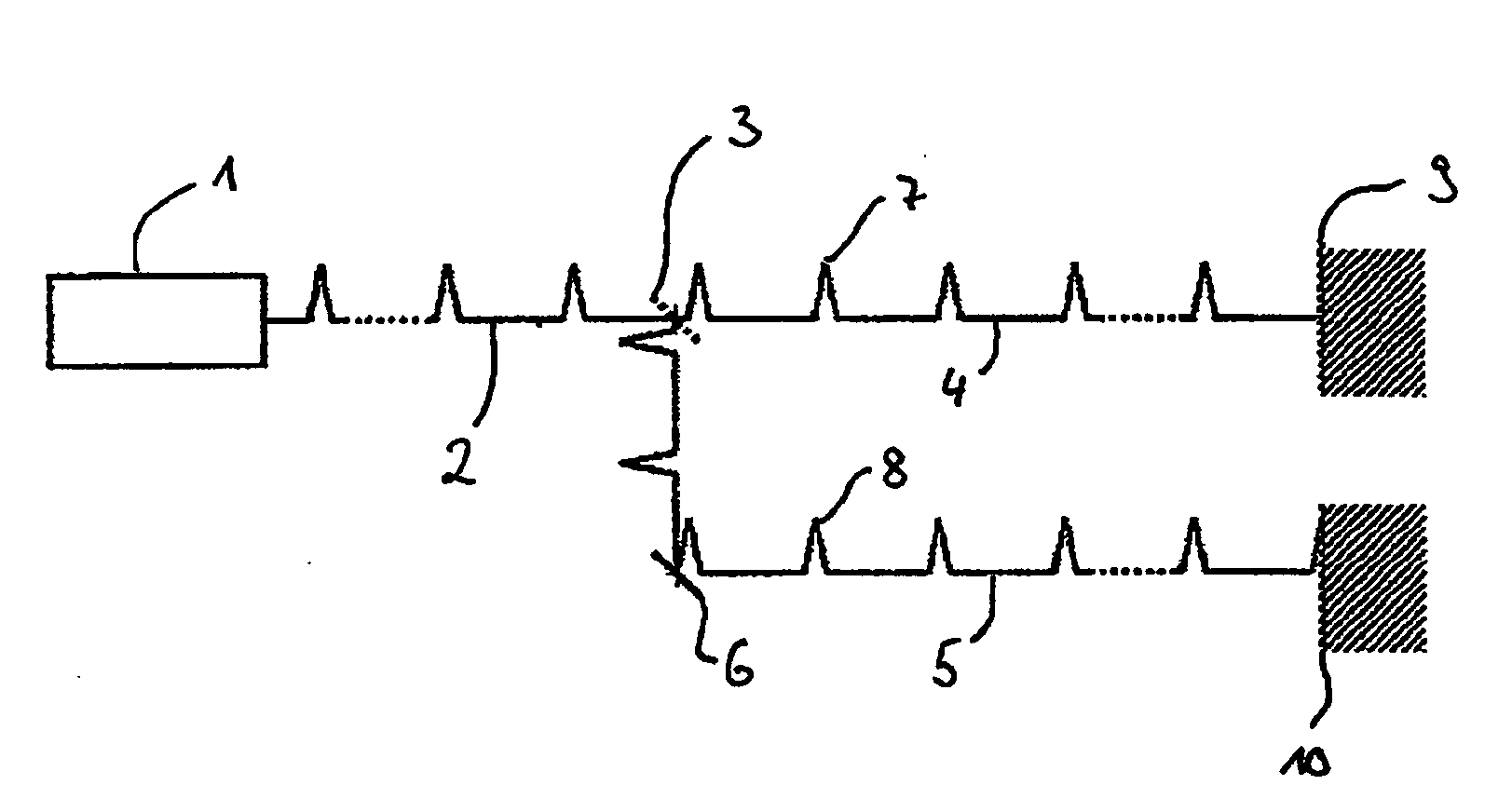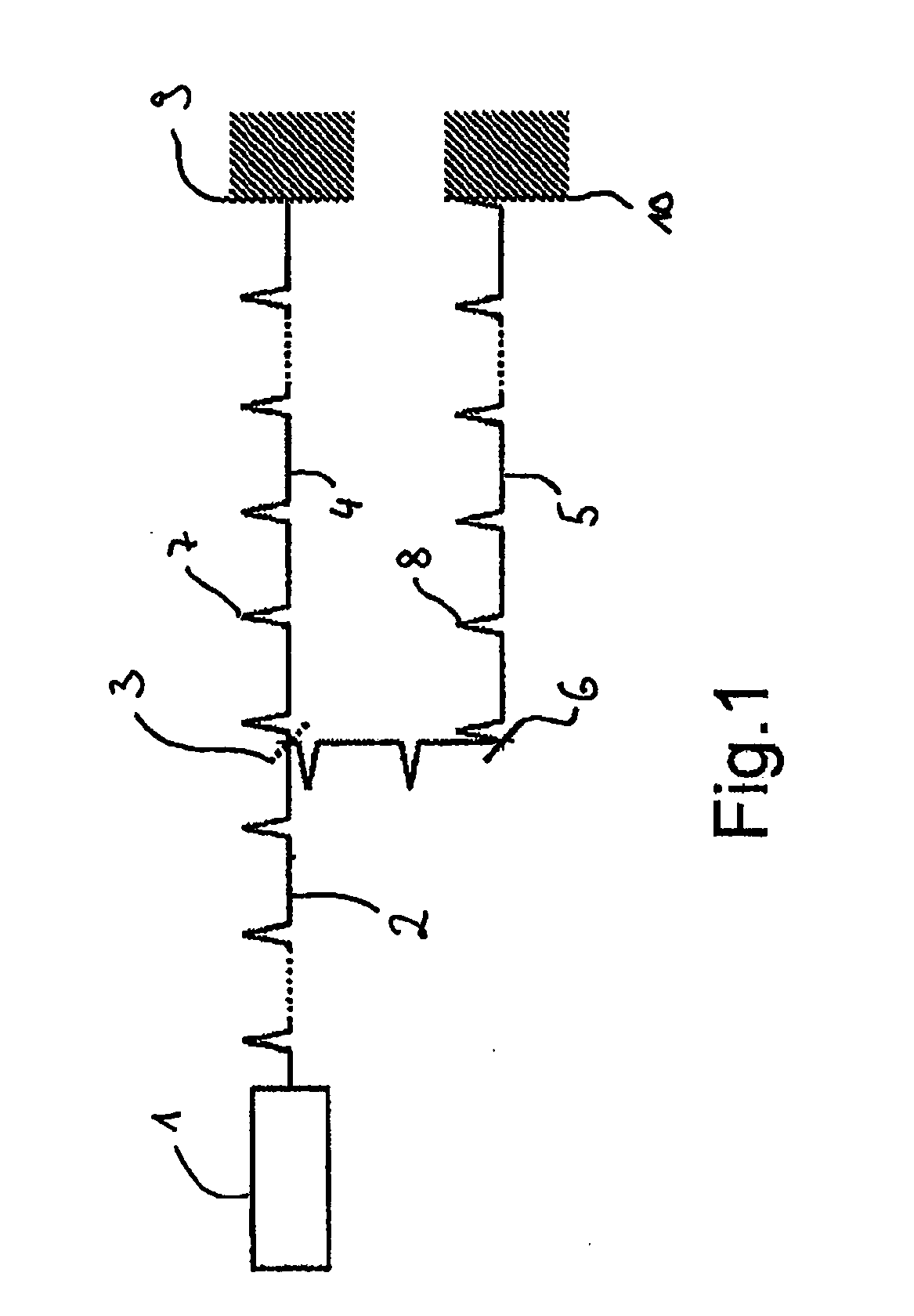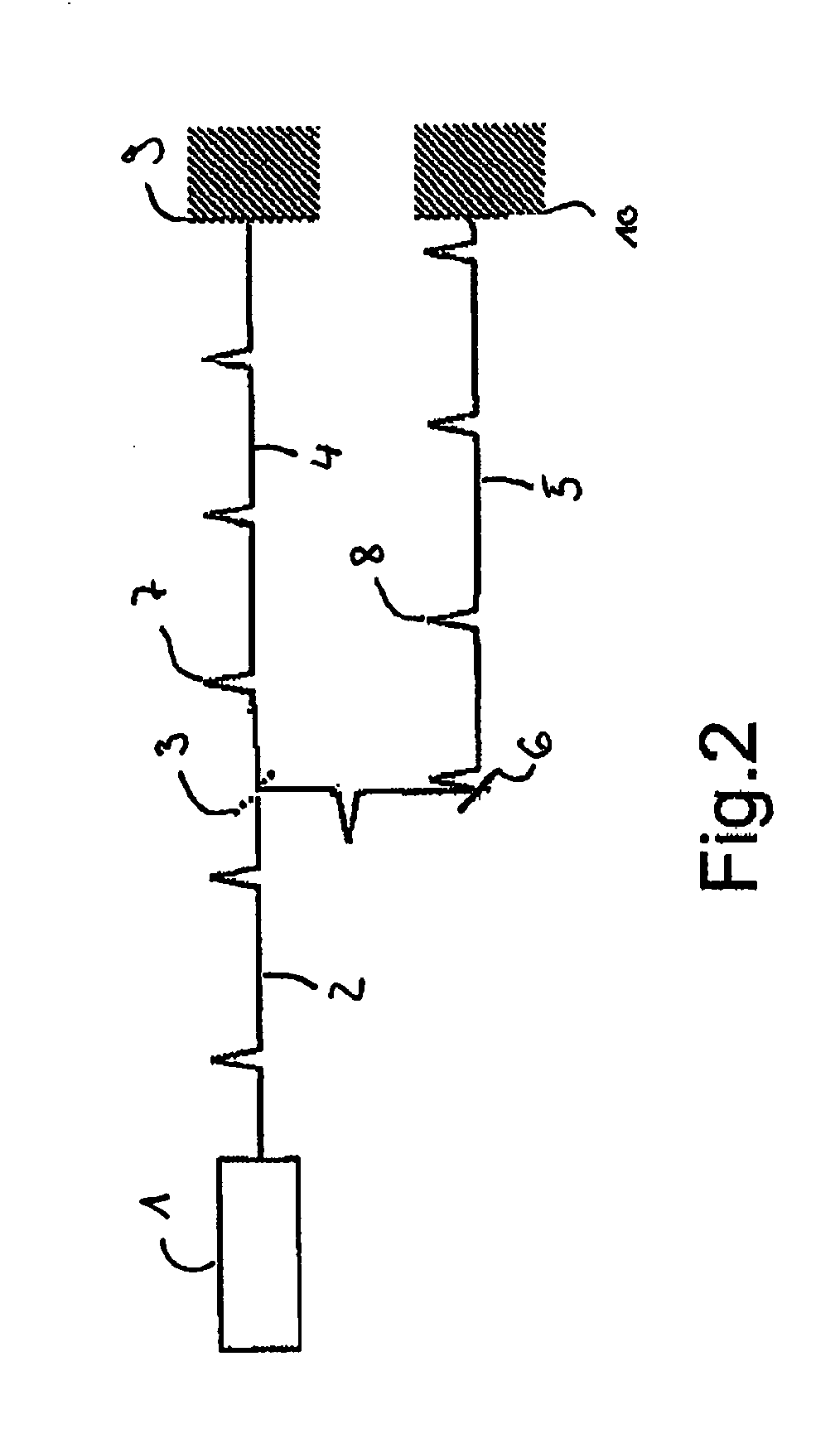Method for generating two optical pulses with a variable, time pulse interval
a time-period interval and optical pulse technology, applied in the field of generating two delayed pulses, can solve the problems of frequent time delay, limited delay path with regard to its variability, and time delay, and achieve the effect of simplifying adjustmen
- Summary
- Abstract
- Description
- Claims
- Application Information
AI Technical Summary
Benefits of technology
Problems solved by technology
Method used
Image
Examples
Embodiment Construction
[0037]Referring to the drawings in particular, FIG. 1 shows an arrangement for carrying out the method according to the invention with a laser light source 1, which generates a pulsed beam 2, which impinges on a beam splitter 3 and is divided into a first partial beam 4 and a second partial beam 5. The second partial beam is deflected by means for beam deflection 6. The first partial beam 4 contains a first pulse 7, which is directed to a first target area 9. The second partial beam 5 contains a second pulse 8, which is directed to a second target area 10. The second partial beam 5 covers a delay path, which lies between the beam splitter 3 and the means for beam deflection 6. A pulse generated at a specific repetition rate is divided by a beam splitter 3, which may be configured here as a semi-permeable mirror, into a first pulse 7, which lies in a first partial beam 4, and into a second pulse 8, which lies in a second partial beam 5. In this case, the delay path is selected as a f...
PUM
 Login to View More
Login to View More Abstract
Description
Claims
Application Information
 Login to View More
Login to View More - R&D
- Intellectual Property
- Life Sciences
- Materials
- Tech Scout
- Unparalleled Data Quality
- Higher Quality Content
- 60% Fewer Hallucinations
Browse by: Latest US Patents, China's latest patents, Technical Efficacy Thesaurus, Application Domain, Technology Topic, Popular Technical Reports.
© 2025 PatSnap. All rights reserved.Legal|Privacy policy|Modern Slavery Act Transparency Statement|Sitemap|About US| Contact US: help@patsnap.com



